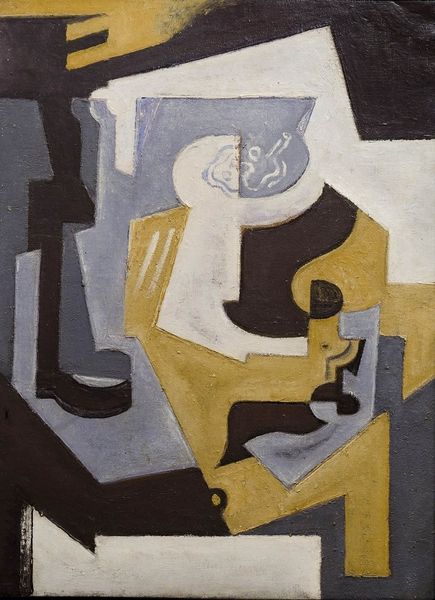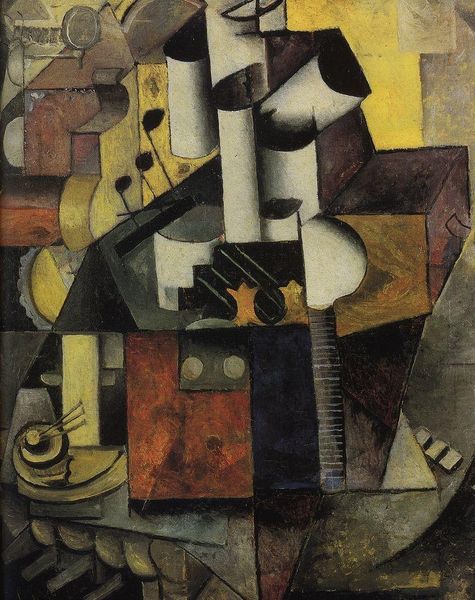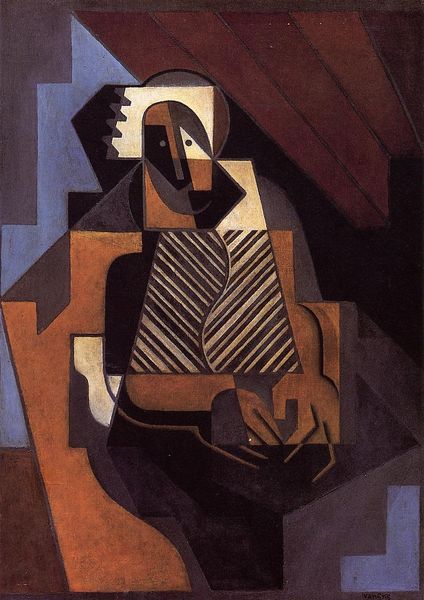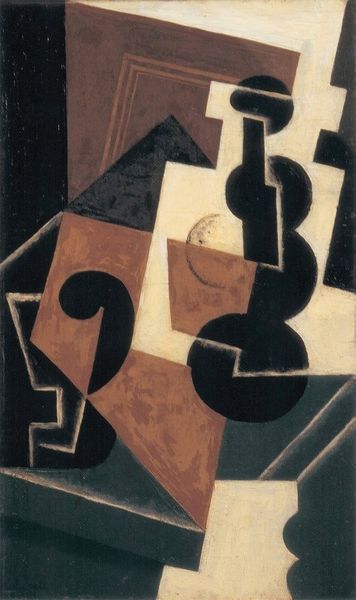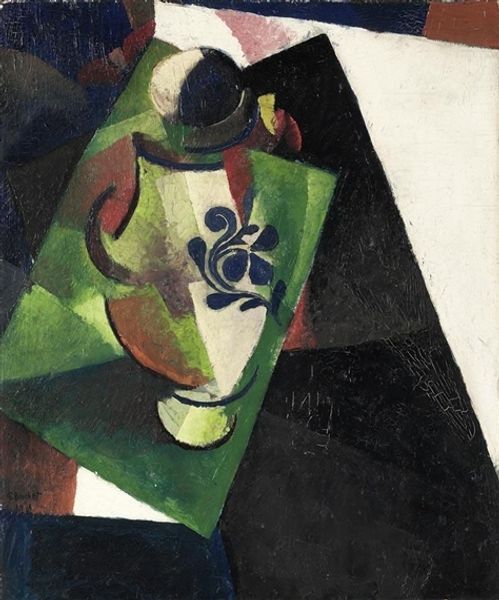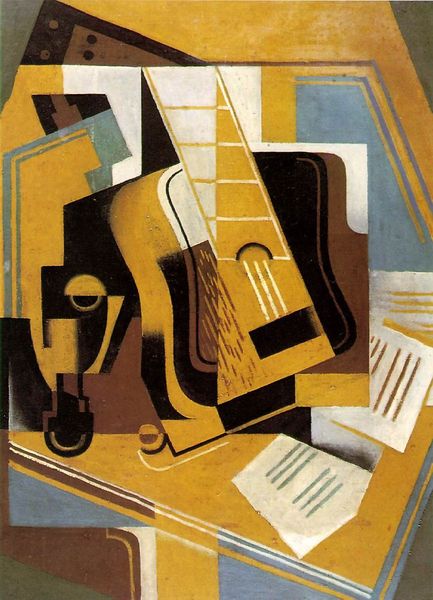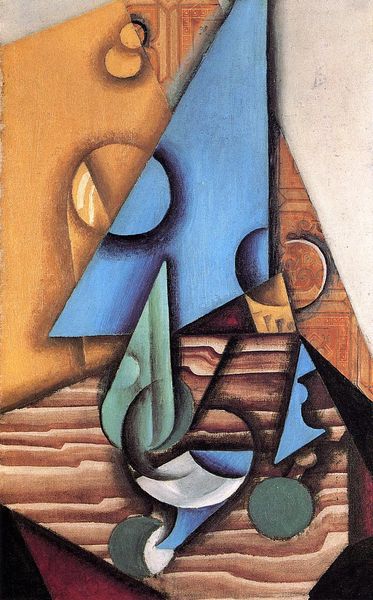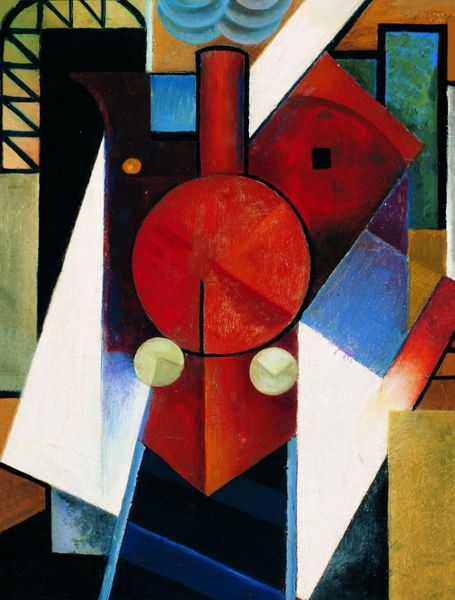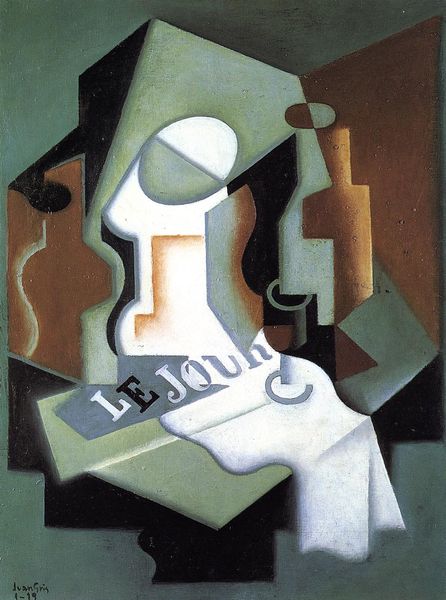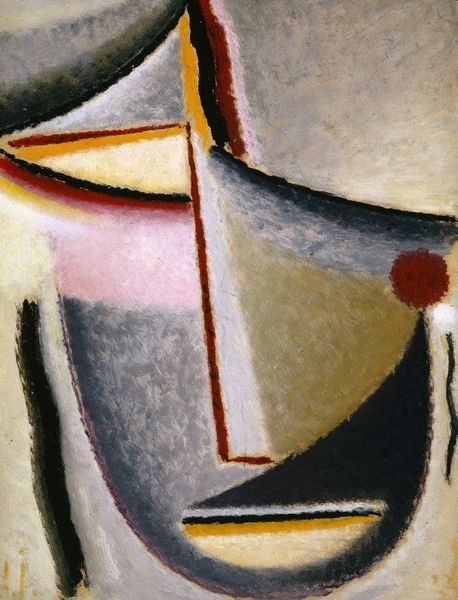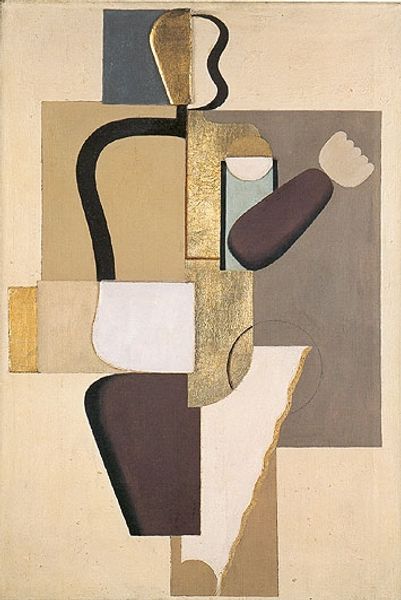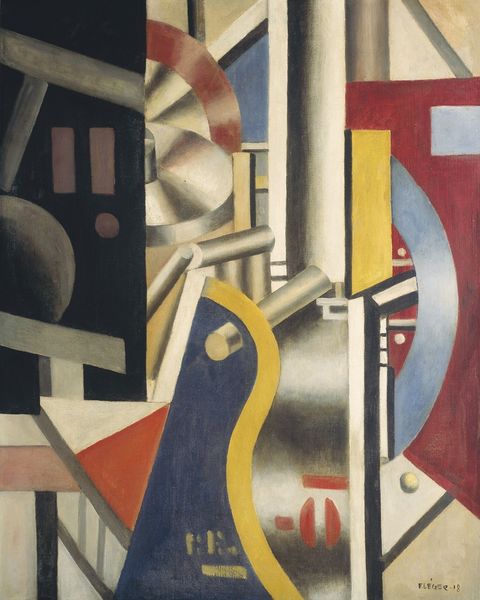
collage, oil-paint
#
cubism
#
collage
#
oil-paint
#
oil painting
#
geometric
#
abstraction
#
modernism
Copyright: Public domain
Curator: Take a moment to observe Juan Gris's "Lemon," an intriguing Cubist work, employing both oil paint and collage. Immediately striking, isn’t it? Editor: Absolutely. There's a deliberate stillness, almost a weighty silence, achieved through that restricted palette and the sharp-edged geometry. What's most prominent, however, is the tangible texture of the newspaper intersecting these planes. Curator: Precisely, the introduction of the collaged newspaper clipping disrupts the painted surface, playing with our perception of depth and flatness. Look how he articulates the subtle variations in gray to create nuanced planes. Gris is carefully constructing this world as an analytical exercise. Editor: The gesture becomes significant when we acknowledge how painting, then, must emulate these other, less revered materials in a visual hierarchy. Look, specifically, at the relationship between newspaper as vehicle of information versus its deconstruction to graphic texture. And don't overlook what appears to be the edge of a glass. Is it a vessel to consume or be consumed by the shapes around it? Curator: An insightful perspective, indeed. Gris seems interested in questioning our relationship with these quotidian objects—the newspaper, the fruit, the glass—reducing them to their essential forms. He builds a structured interplay of shape, space and tone, eschewing easy readings and representational accuracy. He pulls us back from mere subject matter. Editor: That formal rigor, though, speaks volumes. The visible process highlights how we assign meaning, even in commercial industries, by emphasizing certain materials and suppressing others. The newspaper's integration blurs those high/low distinctions, making the whole undertaking, ultimately, a socio-economic comment through materiality. Curator: I see what you mean. These elements don't merely represent; they become a demonstration of constructing and deconstructing visual meaning. Gris achieves an intricate equilibrium. His rigorous methodology produces, in essence, not an imitation of reality, but rather an object embodying a new way of seeing and experiencing space. Editor: So, from a visual object lesson, Gris manages to draw out social narratives and an engagement with physical creation itself. A beautiful example of material dialectics at play. Curator: Yes, one which invites a prolonged engagement with form and perception, far surpassing the picture of mere objects. Editor: A true testament to seeing art, indeed.
Comments
No comments
Be the first to comment and join the conversation on the ultimate creative platform.
